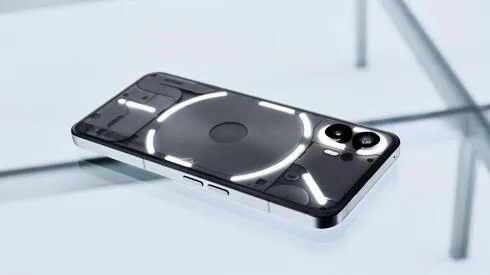
The Grim Future of Mid-Range Smartphones: Are They Becoming Extinct?
2025-01-04
Author: Mei
Introduction
As a smartphone enthusiast, it’s impossible to overlook the drastic changes unfolding within the industry. A recent report from Goldman Sachs has put a spotlight on a disturbing trend: mid-range smartphones, once the backbone of the consumer market, are rapidly being phased out. These devices, typically priced between $200 and $600, were previously beloved for their balance of affordability and specifications. However, Goldman Sachs predicts a sharp decline in this sector’s market share, plummeting from 35% in 2021 to a mere 23% by 2027.
The Driving Factors Behind the Decline
But what’s driving this decline? The answer lies in two main factors: a dwindling supply of innovative features and more restrained spending from middle-class consumers navigating a challenging global economic landscape. Goldman Sachs explains that the divide is widening between high-income buyers opting for premium smartphones and budget-conscious consumers who are now leaning towards entry-level options. As a result, the mid-range market is finding itself increasingly neglected.
The Premium Smartphone Surge
Conversely, the high-end smartphone market—those priced above $600—is flourishing. Its market share grew from 22% in 2021 to 28% by 2023, with projections reaching 32% by 2027. Even more remarkable is the fact that these premium devices are expected to account for approximately 74% of the industry's total revenue in the coming years—a lucrative incentive for manufacturers. For instance, the iPhone 11 Pro Max had a production cost of about $490, while Samsung's Note 20 Ultra set the company back around $550. Yet, both models retail for around $1,200 today, significantly higher than just a few years ago. This trend underscores the manufacturers' preference for high-margin flagship models, resulting in diminishing attention towards mid-range options like the Galaxy S24 FE or the standard iPhone 16.
Budget Phones are Here to Stay
On the other end of the spectrum, budget smartphones—priced below $200—are maintaining a strong presence in the market, accounting for 41-45% of sales between 2021 and 2023. This resilience is partly attributed to the ongoing global transition to 5G technology and the economic pressures that push consumers toward more affordable choices. Moreover, geopolitical events such as the war in Ukraine, conflicts in the Middle East, the U.S.-China trade tensions, and broader economic uncertainties are all shaping consumer spending habits.
Market Growth Projections
Goldman Sachs anticipates a sluggish growth trajectory for the smartphone market overall, projecting increases of just 3% in 2025, 2% in 2026, and a mere 1% in 2027. These predictions stem from a dual lack of innovation and longer replacement cycles. Recent flagship models from tech giants like Apple and Samsung have failed to impress, with leaked specifications hinting that the upcoming Galaxy S25 may hardly differ from its predecessor, the S24. Similarly, Apple is rumored to be readying the iPhone 17, but there are low expectations for groundbreaking advancements.
Furthermore, Apple's recent setbacks—including its struggles with tapping into the AI wave, the failure of its car project, and tepid sales of the Vision Pro AR headset—cast doubt on whether the company is willing to take further risks with its flagship iPhone lineup.
The Rise of Refurbished Smartphones
An additional trend reshaping the landscape is the increasing popularity of refurbished and used smartphones. Many consumers are opting for two-year-old premium models rather than investing in new mid-range devices. After all, why buy a mid-tier phone when a pre-owned flagship can offer superior performance and features at a comparable price?
Reflecting Global Trends: The Israeli Market
Israel’s smartphone market is witnessing trends closely aligned with global patterns, with expected growth of approximately 3% by 2025. It remains predominantly controlled by major players like Samsung (holding 40-50% market share), Apple (25-35%), and Xiaomi (15-20%). However, smaller brands such as OnePlus, Nothing, Oppo, Vivo, Realme, and Honor find it challenging to gain popularity due to inconsistent supply chains and pricing strategies.
While Xiaomi previously carved out a niche by providing great value at competitive prices, even their devices have shown a concerning price increase. Their premium offerings are now competing with Samsung's, prompting former Xiaomi loyalists to reconsider and search for more budget-friendly alternatives.
The Future of Mid-Rangers: What Lies Ahead?
As the smartphone industry evolves, one has to question: what does the future hold for mid-range devices? With competition tightening and consumer preferences shifting, it seems the days of finding a perfect smartphone balance in the mid-range are dwindling. As innovations slow and premium offerings dominate, consumers may need to rethink their buying strategies. Will mid-range devices fade into obsolescence, or can the industry pivot to rekindle interest in this crucial segment? Only time will tell.

 Brasil (PT)
Brasil (PT)
 Canada (EN)
Canada (EN)
 Chile (ES)
Chile (ES)
 Česko (CS)
Česko (CS)
 대한민국 (KO)
대한민국 (KO)
 España (ES)
España (ES)
 France (FR)
France (FR)
 Hong Kong (EN)
Hong Kong (EN)
 Italia (IT)
Italia (IT)
 日本 (JA)
日本 (JA)
 Magyarország (HU)
Magyarország (HU)
 Norge (NO)
Norge (NO)
 Polska (PL)
Polska (PL)
 Schweiz (DE)
Schweiz (DE)
 Singapore (EN)
Singapore (EN)
 Sverige (SV)
Sverige (SV)
 Suomi (FI)
Suomi (FI)
 Türkiye (TR)
Türkiye (TR)
 الإمارات العربية المتحدة (AR)
الإمارات العربية المتحدة (AR)